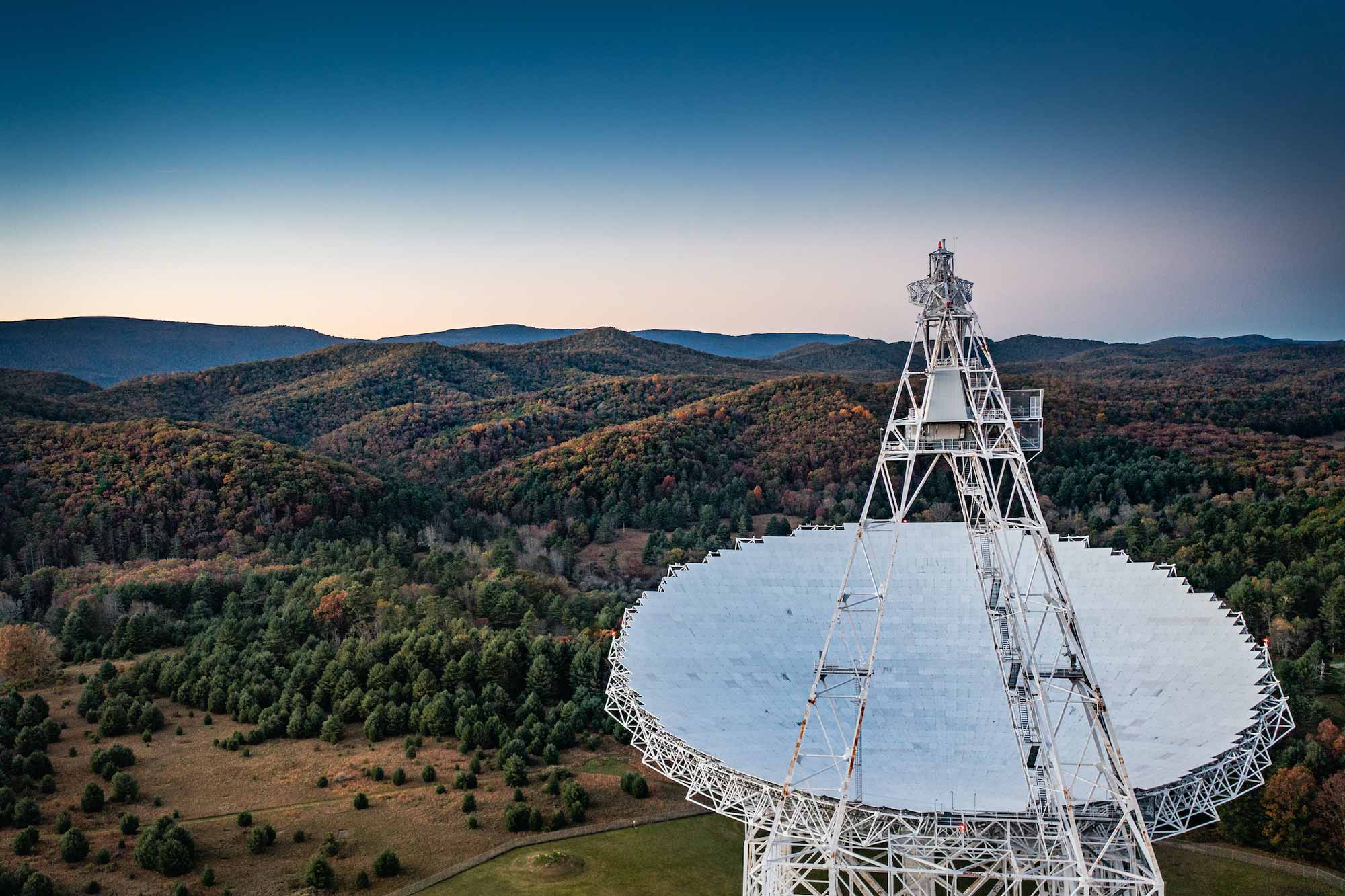Scientists don’t need to rely exclusively on light any more to “see” and understand the universe. They can use the universe itself – in particular, enormous burned-out stars called pulsars that emit recurring pulses of radio waves with metronome-like precision.
Last week, an international research team – whose North American affiliates are known as NANOGrav – presented new findings about the universe using that space-based feedback system. Low-frequency gravitational waves, it turns out, are robustly woven into the background of our universe. They are as constant as air or ocean currents, the team revealed.
University of Virginia visiting research professor Scott Ransom of the National Radio Astronomy Observatory, which is headquartered on Grounds, orchestrated and led much of the NANOGrav effort. He first assembled the partners at a meeting in Charlottesville in 2007. He also chaired the group for four years, until January.
Ransom said that the team’s findings, based on a 15-year data set drawn from the radio-wave emissions of 68 pulsars, continue to support the late-great physicist Albert Einstein’s general theory of relativity.
“To do pulsar timing, yeah, you have to be patient,” Ransom said. “But everything that we’ve thrown at Einstein’s general relativity theory has shown that it is correct. And there are some really cool things that Einstein’s theory predicts. There are these ideas of wormholes and all sorts of crazy things.”

Scott Ransom is a UVA visiting research professor and a tenured astronomer at the National Radio Astronomy Observatory. He has longstanding ties to the UVA Astronomy Department. (Contributed photo)
Einstein suspected that massive objects in the universe create fields of energy that ripple through the vastness of space in three dimensions, as well as through time, which constitutes a fourth dimension. His theory explained why some observers have different explanations about where and when events occur.
In the case of gravitational waves, delays in those ever-faithful pulsar signals help document the waves’ locations and sizes. The longer the scientists train their equipment at the pulsars, the more sensitive their equipment becomes, creating a fuller picture.
NANOGrav and international partners even confirmed that the waves, probably caused by distant black holes, are jiggling our planet. But no need to worry, the scientists said. The waves are too mild to hurt us.
Ransom works not only administratively, but hands-on at NRAO, refining the radio telescopic software and collecting-dish equipment that, as a unit, aim out into space from arrays in West Virginia, New Mexico and Puerto Rico. He also teaches the occasional graduate-level radio astronomy course and advises UVA students.
His previous doctoral advisees who worked on the project include Thankful Cromartie (2019), Timothy Pennucci (2015) and Ryan Lynch (2011).
Ransom was initially inundated with requests following the announcement, so Matthew Pryal, an assistant astronomy professor at UVA who conducts public outreach, provided some additional background about the milestone in scientific research.
Q. Can you put this discovery into context for readers?
A. For thousands of years, we have used light to explore and understand the universe. Astronomers have tried to squeeze every detail out of light that we can, including its intensity, color, spectrum, etc. That light helps us understand what the universe is made out of and how it has evolved over time.
Gravitational waves, on the other hand, are an entirely new way to explore the universe. These ripples in space-time traverse the universe, similar to light, and inform us about the objects that generate these gravitational waves – sometimes located billions of light years away.
Gravitational waves were predicted by Einstein’s general theory of relativity and were directly observed for the first time in 2015 by the LIGO [Laser Interferometer Gravitational-Wave Observatory] detector as a result of two black holes merging together.
Like light, gravitational waves travel with different wavelengths, intensities and polarizations, and therefore require different “instruments” to observe them. This new result, presented by the NANOGrav team, allows us to observe gravitational waves at frequencies that LIGO, for example, cannot. It’s the equivalent of having a detector that can only observe infrared light and not being aware of all the ultraviolet light that’s out there as well. This new result opens up the door to a new spectrum of gravitational waves, and therefore a better understanding of our universe.
Q. How does NANOGrav do its work?
A. The North American Nanohertz Observatory for Gravitational Waves is actually a consortium of astronomers working at various locations on the continent, and in collaboration with European, Indian and Australian partners.
Globally, the group is known as the International Pulsar Timing Array, or IPTA.
NANOGrav is able to observe these gravitational wave frequencies by making use of a “detector” that’s the size of the Milky Way galaxy! The team uses dead stars called pulsars to act as very precise time-measuring tools. You can think of pulsars like lighthouses in that they spin at very exact rates (sometimes thousands of times a second), and they beam primarily radio light towards the Earth.
By measuring the time that the pulses from these pulsars arrive, you can determine precisely how far each pulsar is from our planet. If you’ve observed enough pulsars, then you have a galaxy-sized measuring stick in many directions.
Now, if a gravitational wave passes by the galaxy, it will perturb the distance between objects very minimally, which will alter the distance these pulsars are from each other. By observing the pulsars, you just got information about the gravitational wave and, thus, the physical phenomena that created it.
The precision needed for this is incredibly small, but the NANOGrav teams and other independent collaborators believe they’ve observed it. The objects that cause the gravitational waves observable at galaxy scales could be merging supermassive black holes or something else. Now that we can observe them, we can begin to squeeze as much information out of the data as possible – just like we’ve been doing for thousands of years with light.
Q. Why should people care about this discovery?
A. People should care about this discovery for the same reason they should care about any scientific discovery – it betters our understanding of the objects and physical laws that make up our universe, which in turn better informs our place in the universe.
There are no immediate practical implications that this discovery will create on the Earth. But that’s the case with almost every scientific discovery. What this discovery does do, though, is open up a new avenue of exploration that could lead to infinite new understandings.
Perhaps Einstein’s theory of general relativity is not quite right at the most extreme of scales; perhaps our understanding of the early universe needs to be altered; or perhaps there are particles/objects out there that we haven’t yet observed. That’s the beauty of new observational techniques – they create more questions for us to try and find answers to.
Media Contact
Communications Manager School of Engineering and Applied Science
williamson@virginia.edu (434) 924-1321
Article Information
July 12, 2025



.jpg)


